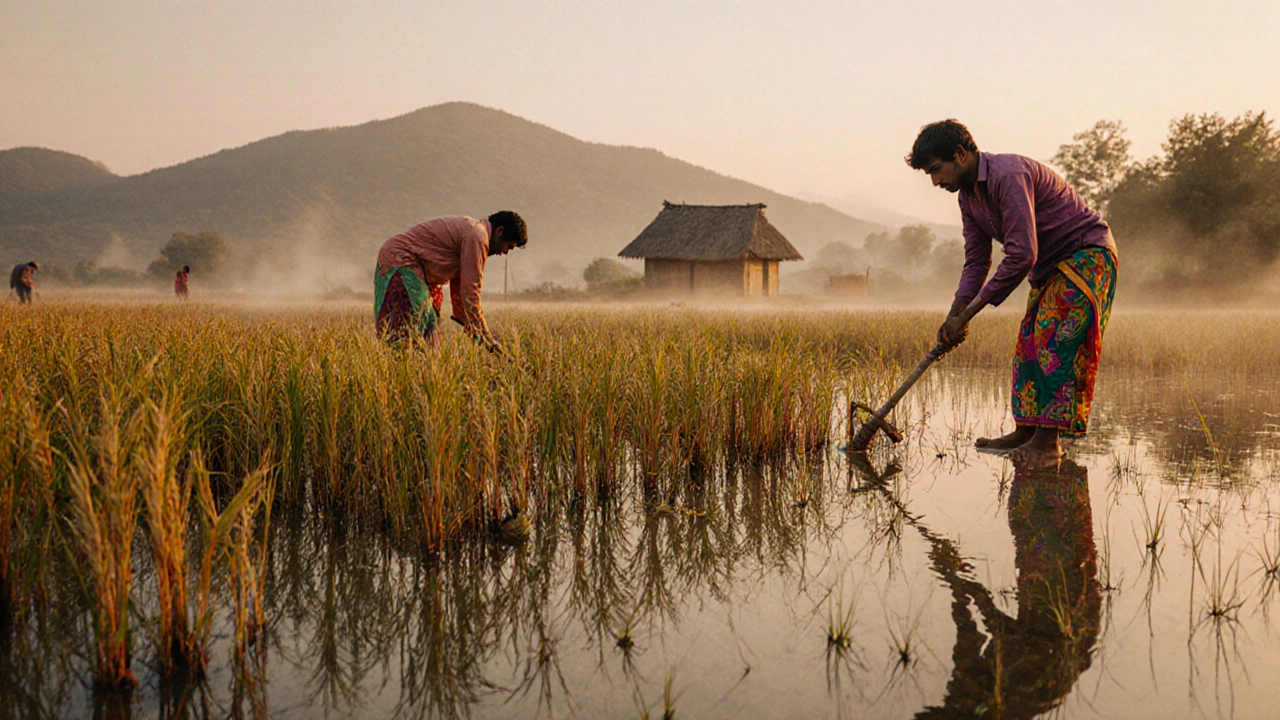Rice doesn't come back every year-it's an annual crop that must be replanted each season. Learn why rice can't regrow, how farmers manage yearly planting, and what perennial rice research means for the future.
Rice Harvest: When, How, and Why It Matters for Indian Farmers
When you think of rice harvest, the process of gathering mature rice crops after the growing season ends. Also known as paddy harvest, it's not just about cutting plants—it's the climax of months of planning, water management, and labor that feeds millions across India. In India, where rice is more than food, it's culture, economy, and survival, the rice harvest marks the turning point between hard work and reward. It’s the moment when fields turn from green to gold, and families breathe easier knowing the next meal is secured.
This harvest doesn’t happen all at once. It’s shaped by seasons, soil, and region. In northern states like Punjab and Haryana, rice is planted after the monsoon rains and harvested between October and November. In southern states like Andhra Pradesh and Tamil Nadu, farmers often grow two crops a year—Kharif rice after the rains, and Rabi rice in cooler months. The timing depends on local rainfall patterns, water availability, and the variety of rice being grown. Some short-duration varieties can be harvested in as little as 90 days, while traditional types may take up to 150 days. The difference isn’t just in days—it’s in labor, cost, and yield.
Success in a rice harvest, the process of gathering mature rice crops after the growing season ends. Also known as paddy harvest, it's not just about cutting plants—it's the climax of months of planning, water management, and labor that feeds millions across India. isn’t just about timing. It’s about how you cut, dry, and store. Many small farmers still use sickles, hand-harvesting every stalk to avoid losing grains. Others use combine harvesters, but only if the field is flat and the soil firm enough to support heavy machinery. Drying the grains right after harvest is critical—wet rice spoils fast. Farmers spread it on courtyards, roads, or raised platforms under the sun. Moisture levels must drop below 14% before milling. Skip this step, and mold sets in. Lose the grain, lose the income.
What’s often ignored is how weather after harvest can make or break the season. A sudden downpour during drying can ruin weeks of work. That’s why many now use solar dryers or simple tarp systems. Even small changes—like using plastic sheets to cover piles at night—can save hundreds of kilograms. And it’s not just the crop. The rice straw left behind? It’s used for animal feed, compost, roofing, or even biofuel. Nothing goes to waste when you’ve worked the land hard.
You’ll find stories in the posts below about soil prep that leads to better yields, tools that make harvesting easier, and how farmers in different parts of India adapt to changing rains and rising costs. Some share how they switched to faster-growing varieties to fit two crops into one year. Others talk about the struggle of selling at fair prices when middlemen control the market. There’s no single way to do a rice harvest—but there are smart ways. What follows isn’t just advice. It’s experience. From village fields to backyard plots, these are the lessons that keep Indian rice farming alive.
